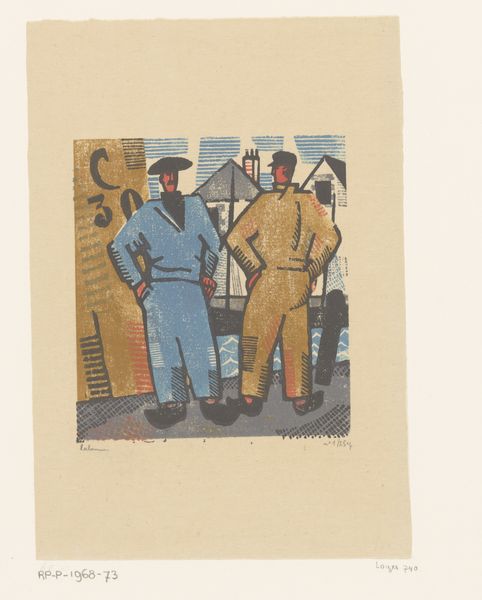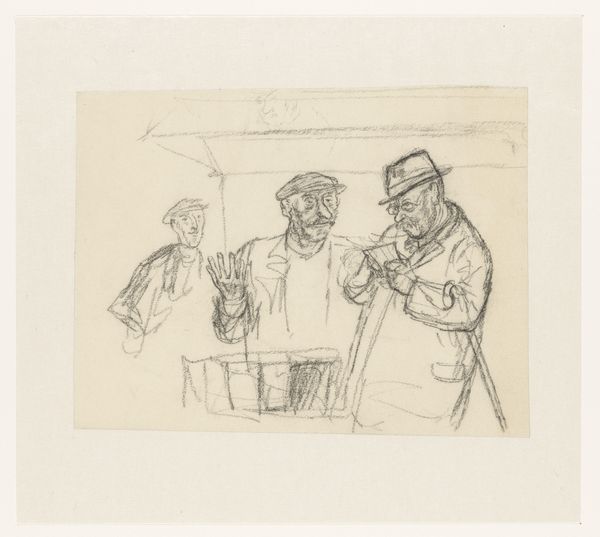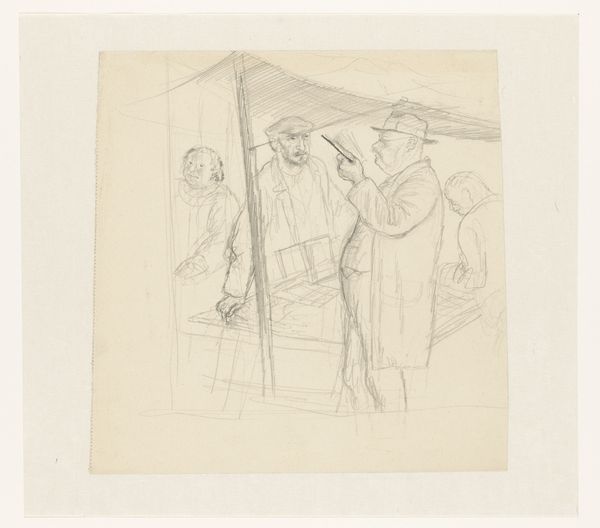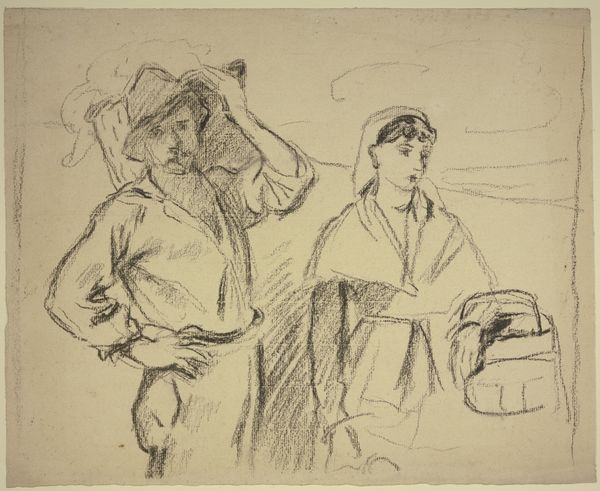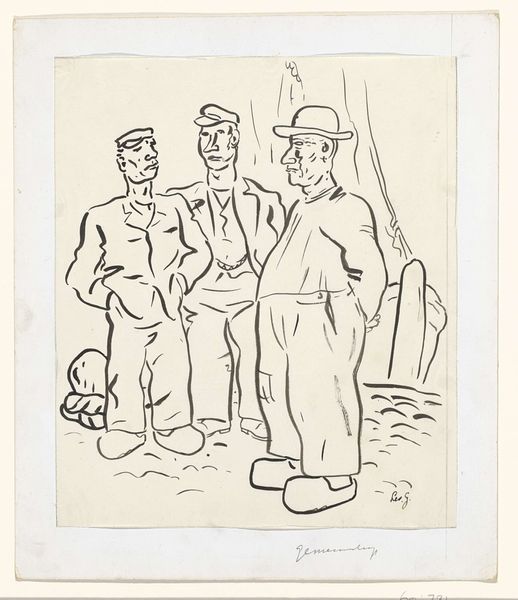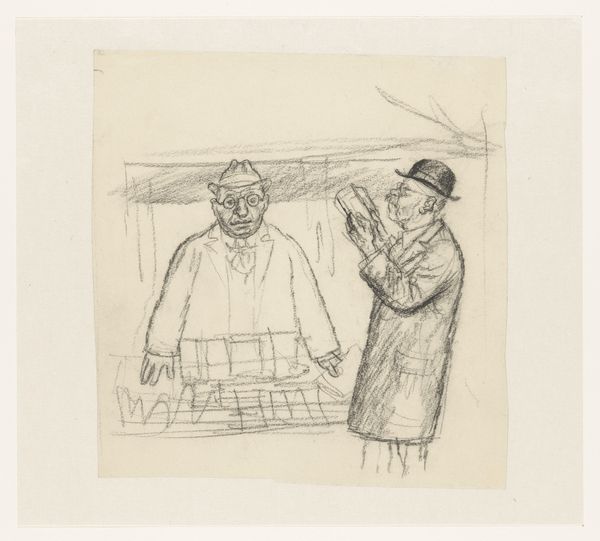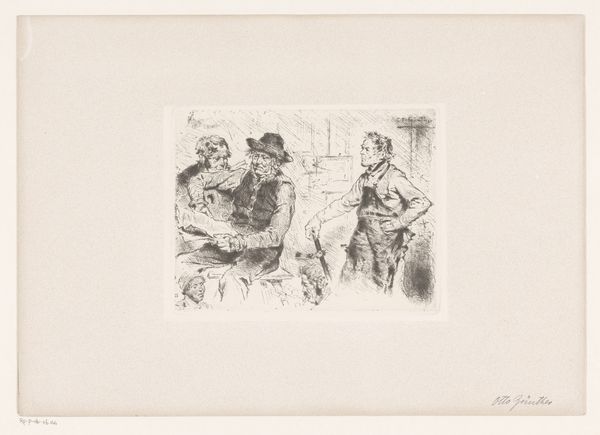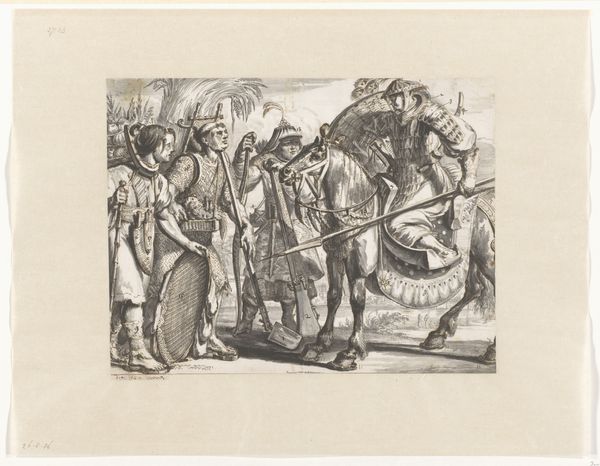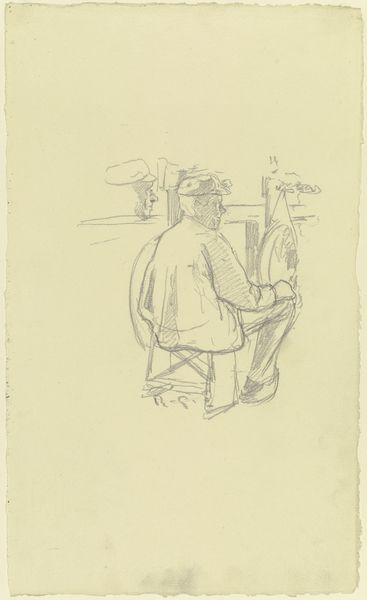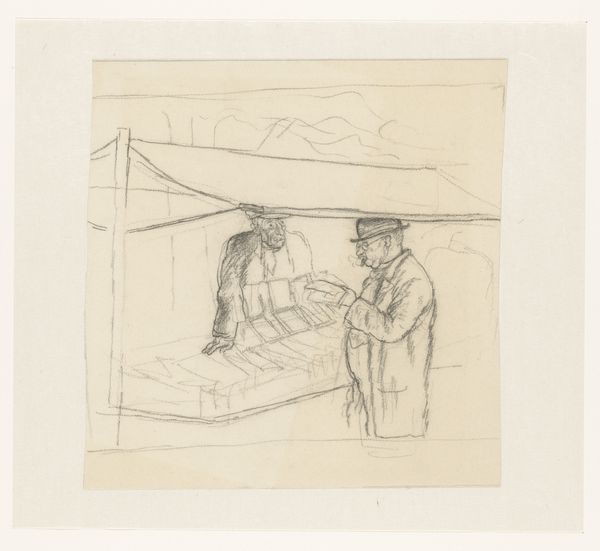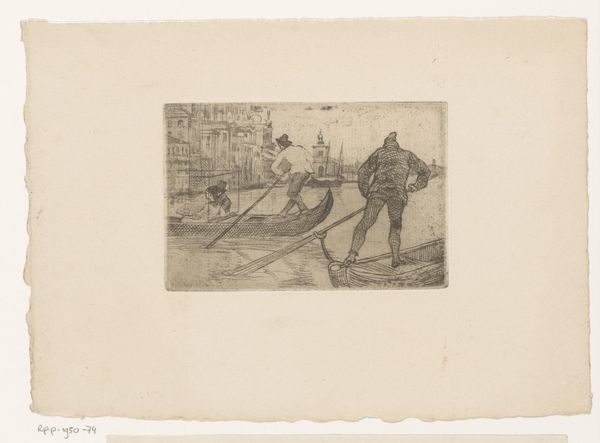
drawing, print, pen
#
portrait
#
drawing
# print
#
pen
#
watercolour illustration
#
genre-painting
#
modernism
Dimensions: height 276 mm, width 351 mm
Copyright: Rijks Museum: Open Domain
Curator: Looking at "Three Fishermen on the Quay," created in 1924 by Jean Emile Laboureur, immediately I think, they're just waiting, aren’t they? Patient, still... like cats observing a mouse hole. Editor: It's interesting you pick up on the stillness, because these fishermen exude this solidity, this almost monumental quality. The simple forms and the very limited palette give it that classic, timeless feel. It speaks to the historical image of laborers everywhere. Curator: Yes! Solid, but quiet, I think it is more like the pause between swells, though, that is a bit deceptive. It’s printed – pen and ink, really. Which gives it this beautiful, subtle texture when you look closely. Editor: And it fits in well with the trends of the time. Laboureur was creating this at a moment when art was really trying to depict everyday life. But in this context, one could also point out that there's a specific politics to these images— a deliberate focus on the dignity of labor during a time of immense social change after the end of WWI. Curator: Absolutely! And it almost flattens the background – houses becoming blocks, water just a series of stylized waves. It pushes them forward, focusing your attention right there, on those sturdy, quiet figures. It’s… reverential almost. They don't demand attention, but they command it anyway. Like old stones on the shoreline. Editor: Precisely. This piece asks us to rethink about how we romanticize coastal life and labor. How images and stories can both reveal and conceal. It gives an aesthetic response that's very tied to those economic issues in the interwar period, really calling to mind some of those critical approaches to Regionalism. Curator: It really is quite special, that it speaks of time as a force; like they are bearing all of it on their backs. Almost as if they are patiently bearing witness for us all, reminding us there is beauty to be found in the common, quotidian things. Editor: Yes, and also asking us to confront the labor itself, in these genre paintings: Whose stories get told? Who gets represented, and how? A deceptively simple piece holding complex cultural tensions.
Comments
No comments
Be the first to comment and join the conversation on the ultimate creative platform.
